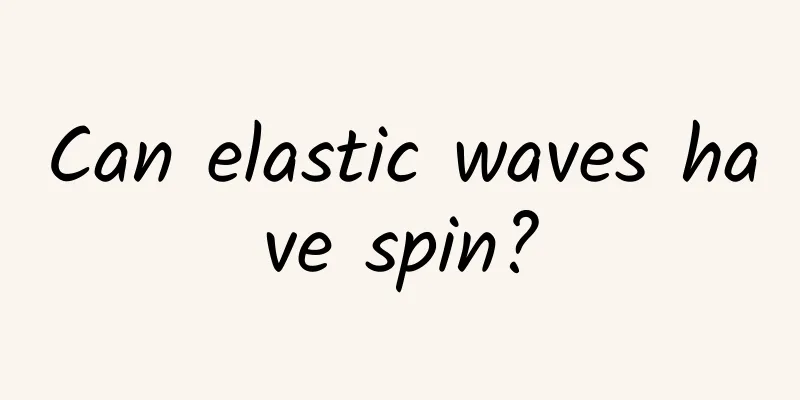A woman bought cephalexin and beer in an attempt to commit suicide. Never drink alcohol when taking these medicines!

|
Recently, a delivery boy in Hangzhou, Zhejiang, found a woman arguing with her boyfriend on the phone when he was delivering beer to her home. At the same time, another delivery boy also came to deliver a box of cephalosporin. After receiving the express delivery, the woman took 7 cephalosporins, drank a small amount of beer, and returned to the house. Later, the delivery boy realized something was wrong and decisively called 110. After the police arrived at the scene, they sent the woman to the hospital for treatment, and she was basically fine after treatment. Scene of law enforcement, source of the picture see watermark Many people know that drinking alcohol is not allowed when taking medicine for illness . Taking cephalosporin and alcohol together is a big taboo. Taking them together may be life-threatening, but some people don't care. So why can't cephalosporin be taken with alcohol, and what other medicines require abstinence from alcohol while taking them? Why can’t cephalexin be taken with alcohol? Cephalosporins can affect alcohol metabolism, causing its metabolite acetaldehyde to accumulate in the body, leading to adverse reactions in the digestive, respiratory, circulatory, and nervous systems. Mild symptoms: nausea, vomiting, diarrhea, dizziness, sweating, palpitations, etc.; Severe symptoms: respiratory depression, myocardial infarction, heart failure, mental confusion, etc.; These symptoms are collectively called disulfiram-like reactions . Disulfiram is a drug used to stop drinking and has been approved for marketing in many countries. Once taken, even if you drink a small amount of alcohol, it will make your body feel nauseous, vomit, and other uncomfortable feelings, making you no longer want to get close to alcohol, so it is also called disulfiram or disulfiram. Therefore, a reaction that produces similar symptoms to those after taking disulfiram is called a disulfiram-like reaction. These reactions caused by taking disulfiram are caused by the inhibition of acetaldehyde dehydrogenase in the body by disulfiram. Acetaldehyde dehydrogenase can eliminate acetaldehyde produced by the human body. When its activity is inhibited, acetaldehyde will accumulate in the body, causing acetaldehyde poisoning , which is also called disulfiram-like reaction. Alcohol will also be converted into acetaldehyde in the body. More acetaldehyde accumulation will aggravate the symptoms of acetaldehyde poisoning. The process of alcohol metabolism in the human body, picture from the author Many cephalosporin drugs have a structure called "tetrazolium", which can also inhibit acetaldehyde dehydrogenase, but it will not cause poisoning as long as it is not taken in excess. However, if alcohol is consumed before the drug is metabolized and becomes ineffective, it will still cause additional accumulation of acetaldehyde in the body, producing a disulfiram-like reaction and threatening life safety. Why are some people fine when taking cephalexin with alcohol? Some people have tried taking cephalexin with alcohol and did not experience any adverse reactions. How do you explain this? In fact, not all cephalosporins contain tetrazole side chains , such as cephalothin, cefpirin, cefadroxil, etc., and not all clinical trials of cephalosporins have disulfiram-like reactions. However, for the sake of life safety, it is not recommended to take cephalosporins with substances containing alcohol, including wine, chocolate with alcohol filling, and other alcohol-containing medicines. Copyright image, no permission to reprint As for those who "have no problems with taking cephalosporin and alcohol", it is likely that the dosage was not large, the cephalosporin without tetrazole side chain was used, and the body's metabolic activity was good at that time... In short, it’s best not to take risks. Attention! Do not drink alcohol before or after taking ceftriaxone! The order and time in which cephalosporin and alcohol enter the human body depends only on when the cephalosporin and alcohol can be metabolized. In other words, they cannot coexist! No matter what substance, the metabolic rate in the human body will vary from person to person, so it is most reliable to take a conservative value. After alcohol is ingested by the human body, only about 10% can be excreted in its original form through breathing, urination, sweating, etc. , and the other 90% needs to be excreted through a complex metabolic process. If the liver function is normal and the person does not drink excessively, then a normal person will metabolize the alcohol within 48 hours. Whether cephalosporins are administered orally or by injection, they will be absorbed into the blood within two to three hours. As long as they are administered in reasonable doses, these drugs will be metabolized within a week. Taking cephalosporin before drinking alcohol and taking cephalosporin after drinking alcohol both cause the same damage to the human body and will produce disulfiram-like adverse reactions. Therefore, the interval between drinking and taking ceftriaxone should be at least one week. What other medicines should not be taken before or after drinking? Alcohol is a carcinogen, so drinking it when you are healthy is risky, and drinking it when you are taking medicine is even more inappropriate. So, what medicines should you not drink alcohol before or after taking? antibiotic Such as cephalosporins, metronidazole, etc. They can cause disulfiram-like reactions and threaten life safety. Copyright image, no permission to reprint Sedatives and hypnotics Such as diazepam, barbiturate, etc. Alcohol and such drugs will produce sedative and hypnotic effects. Excessive sedation will not only damage the brain, but also lower blood pressure and cause danger. Diabetes-lowering drugs Such as insulin, metformin, etc. It may cause hypoglycemia, and poor liver function may lead to ketoacidosis. Blood pressure medication Such as reserpine, nifedipine, etc. It can cause hypotension or central nervous system depression, which can be life-threatening in severe cases. Copyright image, no permission to reprint Antidepressants Such as sertraline, fluoxetine, etc. If antidepressants are used together with alcohol, it is not "how to relieve worries, only Du Kang", but it may be "drinking to relieve worries will only make you more worried". Nonsteroidal anti-inflammatory drugs Such as aspirin, ibuprofen, etc. Since these drugs and alcohol can cause digestive tract irritation, their simultaneous use can cause diseases such as gastric ulcers. Remember, it is not advisable to take ceftriaxone with alcohol! In addition, every drop of alcohol will have an impact on the human body. The safest alcohol intake is 0, which means that not drinking alcohol is the healthiest approach. Author: Wen Chaochao, Master's student of the School of Basic Medical Sciences, Shanxi Medical University Reviewer: Jin Rui, Deputy Chief Pharmacist, Beijing Century Altar Hospital, Capital Medical University The cover image and the images in this article are from the copyright gallery. The image content is not authorized for reprinting. |
<<: Is edible glue really related to "glue"?
>>: Facing fatal temptation, how to become a "mushroom hero"?
Recommend
Research on 100 growth closed loops | Missionbao fission to increase followers of public accounts
How can we successfully increase the number of fo...
The evolution of live streaming
The evolution of live streaming When live streami...
WeChat "Life-saving SMS": Video 120 system will be officially launched in Chongqing
In the medical field, there is a saying called &q...
Mobile IM development: technology selection and common problems
[[134897]] I am currently working on an iOS IM SD...
Live video streaming, online claw machine and the Internet of Things, where will the next trend be?
Is it possible for an industry that has been tepi...
What is the difference between "shut down" and "restart" on your phone? After using your phone for so many years, I finally understand
When we used mobile phones with removable batteri...
Short video marketing: How to quickly create short Douyin videos that can go viral and bring sales!
In the past 2018, " short video marketing &q...
When will the Mid-Autumn moon be the fullest this year?
Although there has been a saying since ancient ti...
Don’t be afraid if you have fatty liver! Learn these few tips to get the fat out of your liver
Current status of fatty liver disease in my count...
Sunscreen may damage corals. How can you protect yourself from the sun when you go to the beach?
In 2018, the Republic of Palau restricted the sal...
Huawei's 5G phones are back, but supply may be limited
The Kirin 9000 chip used in the P50 Pro previousl...
This is the China Bridge!
When you walk on any road or railway in China The...
3 directions to solve the problem of traffic fluctuations in 618 information flow promotion!
The 618 e-commerce festival is coming soon, and m...
The boy lit four mosquito coils and was "poisoned". Are mosquito coils so toxic?
Audit expert: Gu Haitong Deputy Chief Physician, ...









